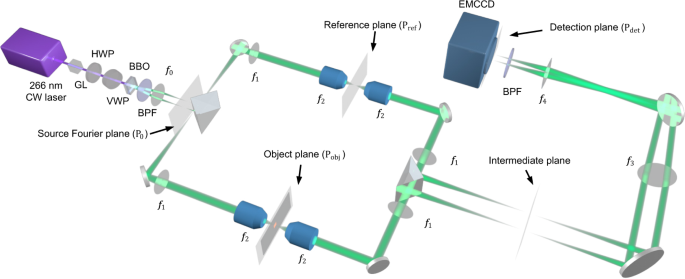2024-03-19 カリフォルニア工科大学(Caltech)
<関連情報>
- https://www.caltech.edu/about/news/using-polarization-to-improve-quantum-imaging
- https://www.science.org/doi/10.1126/sciadv.adk1495
- https://www.nature.com/articles/s41467-023-38191-4
空間と偏光のもつれによる生物の量子イメージング Quantum imaging of biological organisms through spatial and polarization entanglement
YIDE ZHANG , ZHE HE , XIN TONG , DAVID C. GARRETT , […], AND LIHONG V. WANG
Science Advances Published:8 Mar 2024
DOI:https://doi.org/10.1126/sciadv.adk1495

Abstract
Quantum imaging holds potential benefits over classical imaging but has faced challenges such as poor signal-to-noise ratios, low resolvable pixel counts, difficulty in imaging biological organisms, and inability to quantify full birefringence properties. Here, we introduce quantum imaging by coincidence from entanglement (ICE), using spatially and polarization-entangled photon pairs to overcome these challenges. With spatial entanglement, ICE offers higher signal-to-noise ratios, greater resolvable pixel counts, and the ability to image biological organisms. With polarization entanglement, ICE provides quantitative quantum birefringence imaging capability, where both the phase retardation and the principal refractive index axis angle of an object can be remotely and instantly quantified without changing the polarization states of the photons incident on the object. Furthermore, ICE enables 25 times greater suppression of stray light than classical imaging. ICE has the potential to pave the way for quantum imaging in diverse fields, such as life sciences and remote sensing.
ハイゼンベルグ極限における細胞の量子顕微鏡観察 Quantum microscopy of cells at the Heisenberg limit
Zhe He,Yide Zhang,Xin Tong,Lei Li & Lihong V. Wang
Nature Communications Published:28 April 2023
DOI:https://doi.org/10.1038/s41467-023-38191-4

Abstract
Entangled biphoton sources exhibit nonclassical characteristics and have been applied to imaging techniques such as ghost imaging, quantum holography, and quantum optical coherence tomography. The development of wide-field quantum imaging to date has been hindered by low spatial resolutions, speeds, and contrast-to-noise ratios (CNRs). Here, we present quantum microscopy by coincidence (QMC) with balanced pathlengths, which enables super-resolution imaging at the Heisenberg limit with substantially higher speeds and CNRs than existing wide-field quantum imaging methods. QMC benefits from a configuration with balanced pathlengths, where a pair of entangled photons traversing symmetric paths with balanced optical pathlengths in two arms behave like a single photon with half the wavelength, leading to a two-fold resolution improvement. Concurrently, QMC resists stray light up to 155 times stronger than classical signals. The low intensity and entanglement features of biphotons in QMC promise nondestructive bioimaging. QMC advances quantum imaging to the microscopic level with significant improvements in speed and CNR toward the bioimaging of cancer cells. We experimentally and theoretically prove that the configuration with balanced pathlengths illuminates an avenue for quantum-enhanced coincidence imaging at the Heisenberg limit.



